- Home
- About
- Courses
- IR/INFO CONFERENCE
- Software
- EXPERT SERVICES
- STANDARDS
- Proposal Templates
- Electrical Systems & Rotating Equipment
- Building Envelopes
- Insulated Roofs
- Photovoltaic Systems
- Pest Detection
- Yachts and Small Craft
- Thermal Imaging of Horses
- Optical Gas Imaging
- Measuring Reflected Temperature
- Measuring Emittance
- Measuring Transmittance
- Distance/Target Size Ratios
- Complete Series
- Resources
- BUSINESS OPPORTUNITIES
- STORE
List of articles contained in the IR/INFO 2015 Proceedings:
Allinson, John (Jack) N., BSc, AMS®
Level III Certified Infrared Thermographer
J.N. Allinson Associates, Inc.

Allinson Infrared Inspection Services, Inc.
222 University Blvd. North #2 Jacksonville, FL 32211
904-721-2177
Young, Damon
President, Florida UAV
Jacksonville, FL 32211 210 870-9570
www.floridauav.com
This email address is being protected from spambots. You need JavaScript enabled to view it.
UAV’s Marine Surveying and Thermal Imaging
Abstract:
In late 2013 the Allinson Companies launched another NDT service – namely the use of Unmanned Aerial Vehicles (UAVs) to document and support visual findings in the art and science of Marine Surveying.
Mr. Allinson will be teaming up with Mr. Damon Young of Florida UAV to present products, sample footage of applications, and discussion of the emerging rules that are being put in place for using UAV’s as a model aircraft versus commercial applications and the implications of disseminating information through the use of still photos and video feeds.
Damon Young has been building and flying all types of R/C aircraft since the early 80’s. Raised on a family farm in Virginia, Damon’s career path first led him to state, then Federal law enforcement before he moved on to private sector investigations.
With 20 years of government and private experience, Damon fully appreciates the opportunities that lie ahead with the safe and responsible use of UAV technology.
Join Jack and Damon as they guide you through the practicality and obstacles of using UAV equipment for NDT applications.
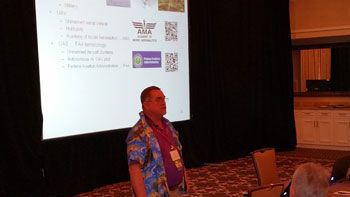
Brevell, Ken
President
Level III Certified Infrared Thermographer
Diamond Technical Surveys, LLC
23221 Aldine Westfield Rd,
Suite 710 Spring, Texas 77373
281-379-6454
888-642-5917
www.DTSinfrared.com
This email address is being protected from spambots. You need JavaScript enabled to view it.
Disser, Jim
District Sales Manager – S. Texas, SW Louisiana
FLIR Systems, Inc.
Montgomery, TX
866-837-3237
www.flir.com
This email address is being protected from spambots. You need JavaScript enabled to view it.

Cooled Infrared Cameras for Predictive Maintenance Applications: Why We Use Them and How They Work
Abstract:
Infrared cameras today are being utilized across an increasingly wide array of applications, including security, law enforcement, energy auditing, medical, recreational (boating & hunting), and R&D, to name just a few.
The majority of these applications are well served by long wave, uncooled detectors, primarily microbolometers.
In the Predictive Maintenance (PM) world, uncooled microbolometer cameras are used extensively to inspect electrical and mechanical equipment, tank levels, roofs, building envelopes and many other applications.
There are a number of applications; however, that cannot be well addressed with uncooled microbolometer cameras, due to challenges relative to wavelength, thermal sensitivity, and spectral filtering.
This presentation will discuss the use of cooled, filtered cameras relative to two of these applications – furnace tube inspection and gas detection.
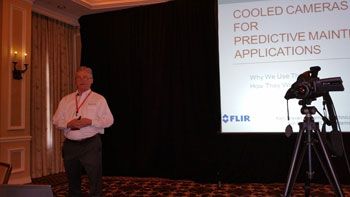
Beauchemin, Oliver F.
Owner, Accolade Group of Vermont, LLC

PO Box 10 Waterville, VT 05492
802-644-8362
This email address is being protected from spambots. You need JavaScript enabled to view it.
8 Bizarre Ways to Entice Real Clients to Listen to YOU
Abstract:
What was true last year is probably not true this year.
Ain’t that a shame! Because you worked so hard to do what Google told you to do.
But now there is something even better than last year’s news.
These 8 bizarre methods are used by successful authors who are more clever than you to get people to return again and again to their websites. And spend money..!
This presentation will examine some psychobabble techniques that work on everyone you want to read what you write. You can’t lose.
But, be careful, it isn’t what you think..!
Solid procedures will be given FREE to attendees.
Any 12 year old can accomplish these amazing feats so you probably qualify.
Don’t miss your one-time opportunity to leave your competitors in the dust.
Be sure to attend; or, get a face-mask to protect yourself from their dust.
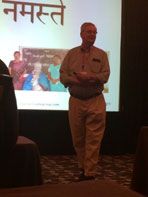
Campbell, William
Level II Certified Infrared Thermographer

Campbell Thermography, LLC
1059 Shady Oaks Drive Ann Arbor, MI 48103
734-662-7179
This email address is being protected from spambots. You need JavaScript enabled to view it.
Thinking Outside of the Box – Radiometric Video Used to Evaluate Sweated Copper Pipe Joints
Abstract:
On January 4, 2014, a new federal law known as “The Reduction of Lead in Drinking Water Act” went into effect. This law drastically decreases the amount of lead allowed in water system components that contact potable water. In order to comply with the new law, NIBCO created a new line of valves and cast fittings using silicon to replace the lead.
To ensure proper installation of these products a new procedure for sweating the fittings was recommended by NIBCO.
Failure to follow the recommended procedure may result in voids in soldered connections, thereby compromising their integrity. In order for sweated connections to be considered reliable, 70% of the space in the connection must be filled with solder.
Currently, there is no cost effective non-destructive method of determining whether this criteria is met although active thermography coupled with radiometric video does offer promise. This paper will discuss the use of radiometric video and active thermographic techniques to diagnose the integrity of copper pipe sweat joints by analyzing the thermodynamics of a 20° change over 60 images captured in 2 seconds.

Cawlfield, Scott
President
Logos Computer Solutions, Inc.
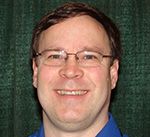
12537 15th Avenue NE, Suite 106 Seattle, WA 98125
206-217-0577
206-217-0573
www.LogosComputer.com
This email address is being protected from spambots. You need JavaScript enabled to view it.
Condition Based Maintenance Programs: Observations of the Good, the Bad, and the Ugly
Abstract:
This presentation will give some history of what I have seen over the last decade in the market with Condition Based Maintenance (CBM) programs.
What parts make up a CBM program?
What are some of the key parts of a successful program and why did some successful programs fail?
Finally, some suggestions on how infrared and other PdM technologies can be an integral part of a company’s successful CBM program.
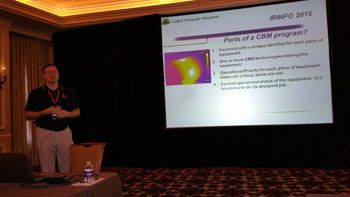
Clark, Alan
T/IRT Level II Thermographer

Palmer Wahl Instrumentation Group
234 Old Weaverville Road Asheville, NC 28804
828-658-3131
Thermal Imaging and Fever Detection in Groups
Abstract:
As potentially devastating diseases hit the headlines, thermal imaging is becoming a frontline tool for the prevention of disease spread.
Thermal imaging systems are now available to screen groups of people and identify those individuals with elevated body temperatures – a potential indication of the fever associated with many diseases in today’s news.
Using a Thermal Imaging Fever Alert System, a properly trained operator can distinguish an individual with a skin temperature higher than a pre-set point.
The system allows the operator to remain at a safe distance while measuring to indicate which individuals require an in-depth medical exam to confirm the presence and potential cause of a fever.
As superbugs become more common, the applications for this technology will become more and more cost effective in a variety of locations.
This paper will discuss the important features of a Fever Alert System and what it can do to safeguard your employees and your business.
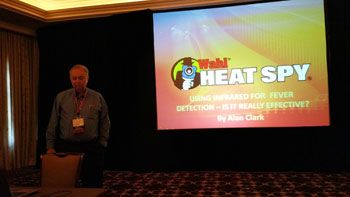
Hall, James
Ultra-Sound Technologies

100 Grove Park Lake Woodstock, GA 30189
770-517-8747
This email address is being protected from spambots. You need JavaScript enabled to view it.
Ultrasound and Infrared: The Complimentary Duo
Abstract:
Ultrasound and Infrared imaging play complimentary roles in today’s PdM world.
Low-cost infrared imaging instruments have opened up the infrared spectrum to a great deal of new users.
Both ultrasound and infrared technicians are finding many opportunities in which these two technologies provide a means to a solution.
This presentation will produce several case histories from electrical infrared and ultrasound electrical inspections of switchgear/substations.
We will also share case histories provided by maintenance technicians on how they have used infrared and ultrasound during mechanical applications such as bearing diagnostics and other motor maintenance.
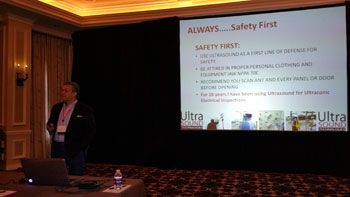
Hixson, Ben T.
Hixson Consultants, Inc.
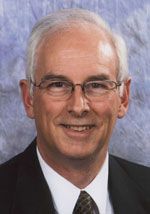
947 First Avenue West Alabaster, AL 35007
205-663-2220
205-664-5115
This email address is being protected from spambots. You need JavaScript enabled to view it.
Infrared Efficacy and Recover Roofing Ethics
Abstract:
This presentation focuses on existing low-slope roofing installations with a single roofing system in place.
With IECC 2012 mandates, infrared roof scans can document dry roofing substrates.
Ethical recover roofing supports infrared roof scans in the roof decision makers and insurer’s best interests.
However, all too often recover roofing systems are installed over trapped moisture because the owner didn’t pay for the cost-effective infrared roofing scan, the membrane manufacturer doesn’t verify their roofing system, or the repair is installed over a documented dry substrate.
Absent a professional infrared roofing scan, the new recover roofing system is susceptible to damage from concealed moisture, the existing roofing system doesn’t meet code and deliver the expected R-value; and if the existing roofing system is an adhered system, the concealed moisture may cause adhesive failure and making wind uplift possible.
The movement to demand integrity to recover roofing substrates has to come from insurer mandates.
It is clear that the other entities involved cannot be expected to demand recover roofing be performed over a documented dry roofing substrate.

James, Sonny
Level III Certified Infrared Thermographer
Owner, Senior Instructor / Managing Director
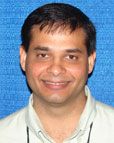
NDE Institute of Trinidad, Ltd. / Thermal Diagnostics Ltd.
15 Robertson Street, Les Efforts East San Fernando, Trinidad & Tobago, West Indies
868-653-9343
868-657-6572
www.learnndt.com
www.tdlir.com
This email address is being protected from spambots. You need JavaScript enabled to view it.
Reformer and Heater Tubes Temperature Accuracy – Comparing Practical Infrared Techniques
Abstract:
Accurate temperature measurement of reformer tubes and other critical heater tubes in chemical and petrochemical plants is of the utmost importance to all process and operation engineers.
If tube temperatures are too low money is wasted due to insufficient production.
If temperatures are too high, tube life can be drastically shortened.
High temperatures also carry an increased risk of costly and dangerous tube failures.
In order to get the most effective use from reformer and critical heater tubes, temperatures must be kept as close to the maximum allowable temperature as possible.
The industry rule of thumb is that a 20C° increase in temperature above its maximum allowable temperature will cut the tube life in half.
Therefore, accurate field temperature measurements are a must for all plants.
This paper will discuss the common practical temperature measurement techniques used in chemical and petrochemical plants to measure tube temperature accurately, which are Spot Infrared Pyrometer and Thermal Imagery.
It will discuss how these technologies are commonly used by plant personnel with the error sources and limitations accompanied by them.
A case study in the use of these techniques will be presented showing how current plant practices can result in considerable inaccuracies unbeknownst to plant personnel that can result in risky or unproductive operation adjustments.
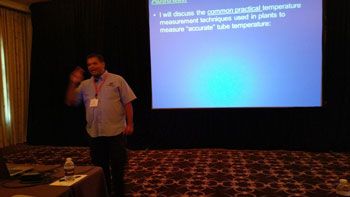
Kochanek, Ed
Eastern Region Sales Director
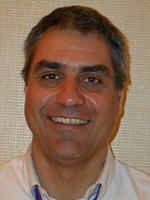
FLIR Systems, Inc.
22 Overlook Drive Woolwich, NJ 08085
866-379-4022
www.flir.com
This email address is being protected from spambots. You need JavaScript enabled to view it.
Are We in the Golden Age of Thermal Imaging?
Abstract:
Infrared detectors are solid state devices that are the heart of a thermal imager.
It is the detector which converts heat energy into an electric signal which is then converted to images and temperature data.
Recent innovations in infrared detector design have led to reductions in both cost and size.
This has allowed manufacturers to design amazing new thermal imagers.
This article will discuss how we may be in the golden age of thermal imaging and will discuss some of the new innovations and how infrared is slowly becoming our sixth sense.
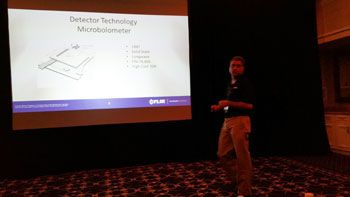
Krawczyk, Krys
Product Manager Thermal Imaging

Testo
40 White Lake Road Sparta, NJ 07871
800-227-0729 x103
www.testo.com
This email address is being protected from spambots. You need JavaScript enabled to view it.
Practical Guide to Solar Power Thermography
Abstract:
Photovoltaic solar panel thermography is used for solar array installation acceptance and for troubleshooting maintenance issues.
Thermal images can easily identify failed cells and arrays, but some non-critical defects can also be determined thereby preventing unnecessary panel replacements.
This presentation will show samples of defective panels and provide thermal imaging tips and information on use of our specialized Testo Solar Mode, built into most Testo thermal cameras.
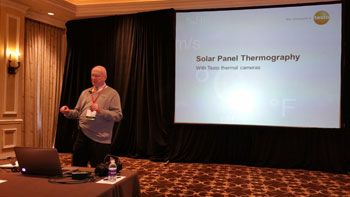
Messer, Adrian
Manager of US Operations
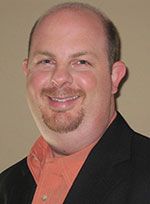
UE Systems, Inc.
864-224-4517
914-282-3504
www.uesystems.com
This email address is being protected from spambots. You need JavaScript enabled to view it.
Ultrasound Assisted Lubrication – Time Based to Condition Based
Abstract:
Airborne and Structure-borne ultrasound have evolved into a technology that many would consider to be the cornerstone of an effective maintenance and reliability program.
From compressed air & gas leak detection, electrical inspection, and various mechanical inspections, ultrasound is truly a versatile tool for anyone’s PdM “toolbox.”
One application in particular utilizes the technology for condition based lubrication and to reduce lubrication related failures in rotating equipment.
The most common causes of bearing failures are related to lubrication. These failures happen because of either a lack of lubrication or too much lubrication.
Ultrasound assisted lubrication helps to take the guesswork out of how much lubricant to apply.
Additionally, typical lubrication programs are based on timed intervals.
With time based lubrication, the tendency is to over lubricate.
Lubricant is applied at timed intervals whether the equipment needs to be greased or not.
Ultrasonic instruments sense high frequency sound waves.
High Frequency sound waves have very little energy, and therefore do not travel very far from the source.
Mechanical problems such as faulty bearings and bearings in need of lubrication are easily detected.
The inspector will be able to hear the high frequency sound as an audible in the headset thanks to the instruments’ ability to translate the high frequency sound into a low frequency audible range.
A visual readout onboard the ultrasonic instrument also indicates the intensity of the sound being detected as a decibel level, and in some cases, onboard spectral analysis.
This presentation will show how using structure-borne ultrasound, one can detect mechanical faults in rotating equipment and prevent failures due to either a lack of lubrication or over lubrication.
The benefits of less rotating equipment failures include less unscheduled downtime, reduced maintenance costs, and reduced motor repair costs.
Information will also be presented on how airborne and structure-borne ultrasound is a perfect complement to other technologies such as vibration analysis and infrared thermography.
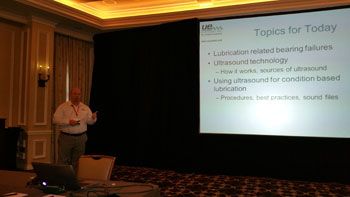
Nunez, Arturo Martinez, Caricia
Mistras Group, Inc.
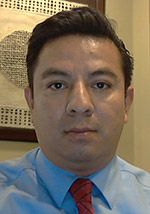
195 Clarksville Road Princeton Junction, NJ 08550
609-716-4000
www.mistrasgroup.com
This email address is being protected from spambots. You need JavaScript enabled to view it.
This email address is being protected from spambots. You need JavaScript enabled to view it.
Remote Continuous Monitoring of Power Transformers
Abstract:
Power transformer owners face several challenges.
Among them are their assets are reaching the end of their operating life and delivery times for a new transformer are very long (18 – 36 months).
Ever increasing demand prohibits the transformers to be taken out of service for routine electrical testing.
At the same time, they still face the pressure to maintain these assets in good operating condition and avoid all the consequences of an unexpected failure such as repair and/or replacement of the failed unit, revenue loss, environmental fines, damage to adjacent equipment, to minimize “in market availability”, to maximize trading and risk issues, PR issues, reducing the operating capacity on remaining transformers in service, and unplanned expenses due to emergency response procedures.
Only a few techniques to determine the condition of the fault can be applied with the transformer in service, and ever fewer options are available for continuous monitoring of these assets.
An on-line monitoring acoustic emission system was developed and has been used for the condition of power transformers since 2004.
Benefits of acoustic emission monitoring include:
- No transformer outage is required to perform electrical tests
- Global monitoring of the asset
- Provides location of the fault
- Offers real time information of when the fault is active
- Indicates under what operating conditions the fault is active
- Severity of the fault can be determined
- Reduce the risk of catastrophic/unexpected failures
This paper presents case studies using this monitoring system to allow the detection and location of faults.

Pratten, John
Proactive Maintenance
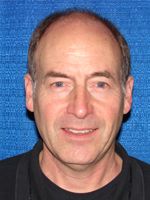
Consultants, LLC
15030 Summerhill Drive Eden Prairie, MN 55346
612-554-2664
www.pmcmn.com
This email address is being protected from spambots. You need JavaScript enabled to view it.
Starting a Sustainable Infrared PdM Program for Dummies!
Abstract:
Through my years of experience working in the world of infrared, I have discovered that a two legged stool just doesn’t stay upright! In order to be successful using infrared in your plant for good electrical or mechanical PdM, you need three “legs of knowledge”, the proverbial “3 legged stool”.
Leg 1: understanding of the science of infrared; Leg 2: a good working knowledge of your IR camera; and Leg 3: how to start and maintain an infrared program within your facility.
Learning the the science of infrared thermography and imager operation are rather straightforward.
Developing a viable and long-lasting infrared inspection program that meets the needs of your company is a far greater challenge.
In setting up an IR inspection program, it is imperative to understand the needs and expectations of company mangement or maintenance personnel in order to help ensure program longevity.
This short paper will offer some simple and time tested ideas to get your PdM program up and running and make it sustainable.
The value of any “program”, approved by management, will be measured by its effectiveness and return on investment.
Richardson, Robert S.
Scheuerer, Jonathan
Jersey Infrared Consultants
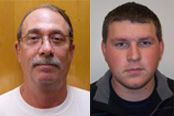
Case Study – The Use of Infrared Thermography to Inspect and Monitor Process Heater Tubes
Abstract:
Process heaters are a critical component in the refining of crude oil.
Similar in construction to a steam boiler, process heaters are used to heat crude oil by passing it through steel tubes located within the firebox of the furnace.
Critical to the safe and efficient operation of the furnace is the operating temperature of tubes within the furnace.
By using a thermal imager designed specifically for infrared inspections of operating heater tubes, it is possible to perform quantitative infrared inspections and monitor temperature of tubes within an operating furnace.
This paper will discuss the application of thermography for process heater tubes and share insights from a project where thermographic monitoring was employed on a daily basis to help ensure safe operation of an operating crude furnace.
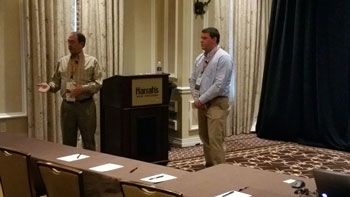
Ripberger, Prof. Ken
Department Chair
Delgado Community College
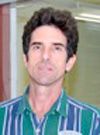
KR Services
840 Helios Avenue New Orleans, LA 70005
504-382-4152
www.krservices.com
This email address is being protected from spambots. You need JavaScript enabled to view it.
Thermography Detection of Previous Water Intrusion
Abstract:
Infrared thermography is well suited for the detection of wet surfaces during rain and also residual moisture in porous materials for only about 24 to 48 hours afterward the event, if exposed to air.
This is because of temperature anomalies while drying due to evaporation.
In 2005, Hurricane Katrina flood water stayed for weeks in places where water should never be.
Yet, most city inhabitants were able to return in no less than a few weeks after their areas were accessible.
During this wait there was no rain, and everything dried quickly.
So, when I was asked to evaluate structures to help determine the extent of water damage with infrared imaging, I suspected that most materials had long been dried, and the effort would likely yield no thermal anomalies consistant with latent moisture.
In many cases that was true, but to my surprise, in some situations the evidence was still apparent.
I must have made a good choice of equipment. Long after flood/roof leak damage, modern IR imagers are so sensitive that they can show past events, due to some surface material E-factor change from chemical changes, regardless of uniform temperature.
This retains a permanent record, like the “Carfacts” of a vehicle.
This paper will discuss the use of thermography to locate previous water damage to structures and defects within same, as well as the effects of substrate type and deterioration on the infrared measured surface.
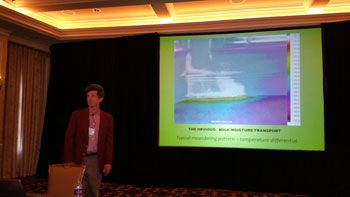
Stockton, Greg
President
Stockton Infrared Thermographic Services, Inc.
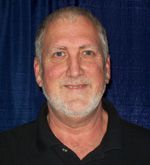
8472 Adams Farm Road Randleman, NC 27317
336-689-3658
www.StocktonInfrared.com
This email address is being protected from spambots. You need JavaScript enabled to view it.
Infrared Surveys to Detect Moisture in Buildings – A Case Study
Abstract:
Building infrared surveys and associated testing can be used to find design flaws, construction defects and building performance issues.
In this presentation, a 60-year old apartment building having many tenant-reported leaks is discussed.
The owners had been advised that the only way to fix the moisture intrusion problem was to remove all the bricks, rehabilitate the drain plane and replace the brick walls.
So, what is the first step to figuring out why the leaks are occurring, and exactly where they are located?

Swirnow, Wayne
President
Level III Certified Infrared Thermographer

Infrared Imaging Services, LLC
PO Box 221 New City, NY 10956
845-641-5482
Thermography Inspection of In-floor Radiant Heating Systems
Abstract:
Infrared thermography is well suited for the detection of radiant heating elements and other subsurface heated piping.
Defects in embedded conduits that carry heated fluids, gases, or electrical heating lines can be difficult to pinpoint and often require costly and destructive exploratory digging.
This excavation process is often ineffective as there is no guarantee that the digging is occurring in the exact area of the defect.
In retrofit construction, buried heating conduits in the work area must be located and marked prior to cutting or drilling into the substrate.
This paper will discuss the use of thermography to locate radiant heating lines and defects within same, as well as the effects of substrate type and thickness on the infrared process.
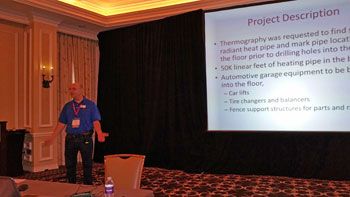
Tucker, Austin
Risk Services Consultant
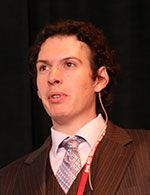
Fireman’s Fund Insurance Company
500 N. Akard Street, Lincoln Plaza, Suite 400 Dallas, TX 75201
817-538-5410
www.firemansfund.com
This email address is being protected from spambots. You need JavaScript enabled to view it.
How to Effectively Present Infrared Imaging to the Novice
Abstract:
How would one walk into a “cold” room and describe infrared technology to the people in that room?
How do you communicate effectively?
What do you highlight?
Leave out?
What kind of feedback do you get afterwards?
In the insurance business, infrared is a developing tool that helps mitigate potential loss claims and is also unfamiliar to the majority of workers in the insurance industry.
Our presentation will show how we attempt to bridge the gap between the initiated and uninitiated as well as what issues help drive the dialogue to a productive outcome and leave a lasting impression.
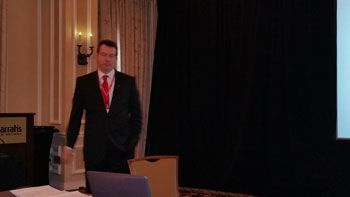
Vance, Timothy
Soprema, Inc.
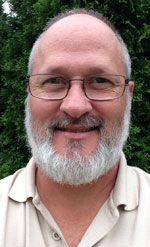
733 East Main Street Apple Creek, OH 44606
330-703-0921
This email address is being protected from spambots. You need JavaScript enabled to view it.
Your Warranty Opportunities and How to Use Them Efficaciously
Abstract:
In the roofing business, from the manufacturer’s perspective, the warranty is fraught with the perils of the next sale.
When the building owner calls to report a leak on their roof, the salesman can quickly become involved because their livelihood is at stake.
Everyone expects the “large manufacturing company” to shell out cash to make repairs, no matter what the actual issue entails.
It seems everyone expects something for nothing.
So, how can this work to your advantage with a premium service to the building owner?
What services can you provide to the building owner?
If you are willing to spend a little extra time, you can learn several simple aspects of roof systems that will aid you in your ability to properly scan a roof, and help you provide better service to the building owner.
This paper will discuss three basic opportunities that can make you indispensable to the building owner.
First, by understanding their roof system you can give them proper direction in addressing what they are seeing on their roof.
Second, by knowing the roof system that they have on their building, you can properly scan the roof and help the building owner understand what they are seeing in the images.
Finally, by understanding something about their roofing system and their roof warranty, you can help them know what to expect from the roof system manufacturer.
As with anything, you don’t want a plumber fixing your car, a mechanic fixing your computer, or small children playing with your best infrared imager.
You want to provide a service to the building owner that is concise and clear.
Be the last person they seek information from, and their first point of contact.
If you provide the information that they need, they won’t seek it elsewhere.
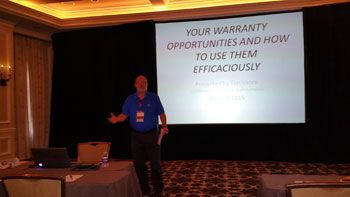
Who Should Attend
- Thermographers
- Process Control Supervisors
- Maintenance Managers
- Loss Control Specialists
- Reliability Engineers
- P/PM and NDT Personnel
- Manufacturers
- Quality Assurance Inspectors
- Home and Building Inspectors
How You Will Benefit
- Education
- Learn New Technology
- Networking
- See Latest Developments
- Share Ideas
- Discover New Applications & Techniques
Professional Curriculum
Infraspection Institute instructors use extraordinary techniques to deliver stimulating, effective, and relevant instruction. All of our instructors are highly experienced, practicing thermographers. Each brings years of unmatched, real-world experience to the classroom. Our courses are taught using a combination of dynamic multi-media presentations, hands-on demonstrations and one-on-one interaction with students. Our courses integrate theory, practice, and case studies in a fun, relaxed atmosphere designed to maximize your learning experience.



